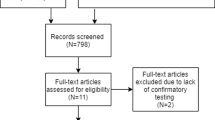Abstract
Current guidelines recommend use of the aldosterone-renin ratio (ARR) for the case detection of primary aldosteronism (PA), the most common cause of secondary hypertension, in selected hypertensive patients. “Confirmatory” tests are then recommended in patients who tested positive at the ARR to exclude from further diagnostic work-up false positive results. Based on our experience we hypothesized that the ARR carries quantitative information, which can avoid the need of confirmatory tests. We herein describe a study protocol to identify the ARR cut-off value with a high specificity for the exclusion of aldosterone-producing adenoma (APA) based on analysis of two large prospectively collected datasets of patients in which a conclusive diagnosis of APA was made by the four corners criteria. This will also serve to investigate the diagnostic gain provided over this ARR cut-off value by one confirmatory test, the captopril challenge test. Hence, with this protocol we expect to identify an ARR cut-off value that might prevent further testing in patients with either a low or a high probability of APA. This could translate in a higher diagnostic accuracy and, by preventing unnecessary invasive testing, into a substantial saving of money, time, and resources.

Similar content being viewed by others
References
Funder JW, Carey RM, Fardella C, Gomez-Sanchez CE, Mantero F, Stowasser M, Endocrine Society, et al. Case detection, diagnosis, and treatment of patients with primary aldosteronism: an endocrine society clinical practice guideline. J Clin Endocrinol Metab. 2008;93:3266–81.
Rossi GP, Dalla Ca A, Italian Society of Hypertension. Clinical management of primary aldosteronism: 2013 Practical Recommendations of the Italian Society of Hypertension (SIIA). High Blood Press Cardiovasc Prev. 2014;21:71–5.
Nishikawa T, Omura M, Satoh F, Shibata H, Takahashi K, Tamura N, Task Force Committee on Primary Aldosteronism, The Japan Endocrine Society, et al. Guidelines for the diagnosis and treatment of primary aldosteronism—the Japan Endocrine Society 2009. Endocr J. 2011;58:711–21.
Rossi GP. A comprehensive review of the clinical aspects of primary aldosteronism. Nat Rev Endocrinol. 2011;7:485–95.
Rossi GP, Belfiore A, Bernini G, Desideri G, Fabris B, Ferri C, PAPY Study Investigators, et al. Prospective evaluation of the saline infusion test for excluding primary aldosteronism due to aldosterone-producing adenoma. J Hypertens. 2007;25:1433–42.
Rossi GP, Belfiore A, Bernini G, Desideri G, Fabris B, Ferri C, Primary Aldosteronism Prevalence in Italy Study Investigators, et al. Comparison of the captopril and the saline infusion test for excluding aldosterone-producing adenoma. Hypertension. 2007;50:424–31.
Bossuyt PM, Reitsma JB, Bruns DE, Gatsonis CA, Glasziou PP, Irwig LM, Standards for Reporting of Diagnostic Accuracy Group, et al. The STARD statement for reporting studies of diagnostic accuracy: explanation and elaboration. The Standards for Reporting of Diagnostic Accuracy Group. Croat Med J. 2003;44:639–50.
Rossi GP, Bernini G, Caliumi C, Desideri G, Fabris B, Ferri C, PAPY Study Investigators, et al. A prospective study of the prevalence of primary aldosteronism in 1125 hypertensive patients. J Am Coll Cardiol. 2006;48:2293–300.
European Society of Hypertension-European Society of Cardiology Guidelines Committee. 2003 European Society of Hypertension-European Society of Cardiology guidelines for the management of arterial hypertension. J Hypertens. 2003;2003(21):1011–53.
Rossi GP, Rossi E, Pavan E, Rosati N, Zecchel R, Semplicini A, et al. Screening for primary aldosteronism with a logistic multivariate discriminant analysis. Clin Endocrinol (Oxf). 1998;49:713–23.
Rossi GP, Sacchetto A, Chiesura-Corona M, De Toni R, Gallina M, Feltrin GP, et al. Identification of the etiology of primary aldosteronism with adrenal vein sampling in patients with equivocal computed tomography and magnetic resonance findings: results in 104 consecutive cases. J Clin Endocrinol Metab. 2001;86:1083–90.
Rossi G, Gregianin M, Chisura-Corona M. Diagnosis and treatment of primary aldosteronism. Ann Intern Med. 1995;123:73–4.
Giacchetti G, Ronconi V, Lucarelli G, Boscaro M, Mantero F. Analysis of screening and confirmatory tests in the diagnosis of primary aldosteronism: need for a standardized protocol. J Hypertens. 2006;24:737–45.
1999 World Health Organization-International Society of Hypertension Guidelines for the Management of Hypertension. Guidelines Subcommittee. J Hypertens. 1999;17:151–183.
Rossi GP, Barisa M, Belfiore A, Desideri G, Ferri C, Letizia C, PAPY study Investigators, et al. The aldosterone-renin ratio based on the plasma renin activity and the direct renin assay for diagnosing aldosterone-producing adenoma. J Hypertens. 2010;28:1892–9.
Lenzini L, Rossi GP. The molecular basis of primary aldosteronism: from chimeric gene to channelopathy. Curr Opin Pharmacol. 2015;21:35–42.
Lijmer JG, Mol BW, Heisterkamp S, Bonsel GJ, Prins MH, van der Meulen JH, et al. Empirical evidence of design-related bias in studies of diagnostic tests. JAMA. 1999;282:1061–6.
Hanley JA, McNeil BJ. A method of comparing the areas under receiver operating characteristic curves derived from the same cases. Radiology. 1983;148:839–43.
Author information
Authors and Affiliations
Corresponding author
Ethics declarations
Conflicts of interest
The authors declare that they have no conflict of interest.
Ethical approval
All procedures performed in studies involving human participants were in accordance with the ethical standards of the institutional and/or national research committee and with the 1964 Helsinki declaration and its later amendments or comparable ethical standards.
Informed consent
Informed consent was obtained from all individual participants included in the study.
Rights and permissions
About this article
Cite this article
Maiolino, G., Mareso, S., Bisogni, V. et al. Assessment of the Quantitative Value Usefulness of the Aldosterone-Renin Ratio (ARR) for Primary Aldosteronism (AQUARR) Study. High Blood Press Cardiovasc Prev 23, 19–23 (2016). https://doi.org/10.1007/s40292-015-0125-0
Received:
Accepted:
Published:
Issue Date:
DOI: https://doi.org/10.1007/s40292-015-0125-0




